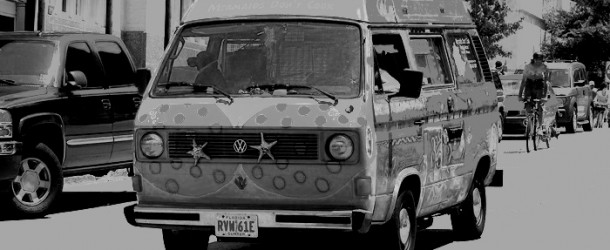One of the biggest struggles that I have encountered upon embracing veganism as a lifestyle was facing the stereotypes or labels that come with it. Some assume that vegans are health nuts, tree-hugging hippies, or angry animal rights activists and so on. There is also this preconceived notion that if you are vegan, you have to go Trader Joe’s or Whole Foods to get the proper nutrition or that you have to shop at expensive stores to get clothing that fits into the vegan lifestyle. Despite the stereotype that many vegans are well-to-do animal lovers, well-read environmentalists, or health conscious individuals, lots of them just cannot afford to shop at these expensive stores.
We can all agree that veganism, in essence, is about the avoidance of exploitation—whether that be exploitation of animals, people from other countries, our health, or our wallets. The question is: what if, despite all our efforts to avoid exploitation, we are being exploited? And what should we do if companies are using our notions of what a “nice meal” looks like to market certain products? For me, I think we start first by initiating a dialogue regarding the matter.
As vegans, we have chosen to deviate from the norm, think outside the box, and be more aware of what we put into our bodies. However, I don’t think this should come at the expense of being tricked by consumerism and the media—the vegan media, unfortunately—into thinking that there are necessities which are, in fact, not at all necessary at all.
Part of the reason I am writing this article is because I know how alienating this idea of consumerism can be. I was a tutor and a graduate student when I became vegan. I had a very small sum of money to spend on food. In turn, I was not the healthiest vegan when I first got into it—mainly because I was reading cookbooks and websites that talked about strange things I have never heard of like “nutritional yeast” and “nondairy cheese,” as part of their recipes. I had no access to these ingredients, and when I discovered where to buy them, I realized that I could not afford them.
See, it is one thing to be vegan. Most toast is vegan. Rice is vegan. French fries are vegan. And, to be honest, for a while, that’s all I ate when I first became vegan because I assumed that I needed to cook “fancy food.” I want to remind all of us of a few things as we start preparing foods for non-vegans (and for yourselves as well!):
- You don’t need to shop at Trader Joe’s, Follow Your Heart, or Whole Foods to be a “good vegan” or “healthy vegan.”
- You can get many if not most of your daily requirements for nutrients through vegetables, fruits, and nuts. And you can get them for cheap.
- Look into local farmers’ markets. People are so sweet there and you’re helping your community this way.
- If you can’t find a local farmers’ market, look into small Mom and Pop stores. Support them by buying spices, vegetables, and so on.
- Some small ethnic stores tend to be cheaper when it comes to vegetables, fruits, nuts. And they also tend to have some food that you never heard of—food that could be very good for you. I had my first cactus fruit a few days ago. They were less than a dollar for a pound.
- Check online to see if you are getting everything you need in terms of nutrition. Here’s an example of a website where these requirements are outlined in a clear manner: http://www.veganhealth.org/articles/dailyrecs
- Please don’t feel like you must eat the fake meat or fake treats in general. I love the vegan marshmallows from Whole Foods, but I also know that this is just as bad, if not worse, than the real deal. There’s still a lot of debate over these things, but as Kris Carr reasons in Crazy, Sexy, Diet, “Soy is definitely the ball in a game of contradictory-research Ping-Pong. But here’s what I know for sure: the more processed the soy product, the worse it is for you. I’m talking about faux meats, treats, and snacks. Processed soy is acidic and mucus-forming” (86).
- As always, remember that veganism is your deal. It’s what you make of it. If you want to eat faux meat, by all means go for it. But try to do it in moderation and with the awareness that you do not have to be eating like omnivores (omnies, as I call them) to appear to be healthy.
- Remember also that your definition of a “fancy meal” does not have to fit into what omnivores present. I was raised on steak on potatoes, just like many vegans, but I think of a nice burrito—beans, rice, and veggies, with some toasted pita chips is gold. We changed our dietary habits once (or twice or thrice). I say we can be pickier and healthier vegans.
- Please be open to do research—to continue to look into what goes in your food. I used to be guilty of this. I used to look for the glorious V for vegan on foods and I was good to go. But that, by no means should that have been my only qualification for grocery shopping.
I am currently working on a companion article, so to speak, that will list books and resources about being vegan in an affordable and healthy manner. Stay tuned!
.
Image courtesy of Flickr.

[…] Blogeintrag von der Veganerin Dina Hady über Konsumerismus und Vegansein (https://www.chicvegan.com/rich-woman-poor-woman-veganism-and-consumerism/ ) fanden wird so klasse, dass wir einiges daraus ins Deutsche übertragen wollen. Dina erzählt auf […]